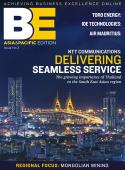As manufacturers discover that lean can bring improvements in processes away from the shop floor, service industries are adopting lean principles, too. Ron Wince traces the migration. What does Toyota have in common with the Johns Hopkins Medical System, Wells Fargo, and General Electric? More than you might thinkÔÇöthe last three are a part of a growing trend of service companies who are . . . . . . adopting the tools that have made Toyota arguably the best automotive manufacturer in the world. While ToyotaÔÇÖs production system has become a staple in the manufacturing sector and has helped hundreds of industrial companies become more competitive by creating operational excellence, it is just beginning to migrate into the service side of the economy. Service company executives hope that by adopting the ÔÇ£applied common senseÔÇØ approach that has helped Toyota displace Ford as the worldÔÇÖs number two automaker (in revenue) that they too can create a competitive advantage through operational excellence. Although focusing on operational process improvement is not new in the service sector and has long been part of every service companyÔÇÖs relentless pursuit of cost reduction, it has often been achieved through one-off major initiatives or the deployment of improvement ÔÇ£expertsÔÇØ trained in business process re-engineering, six sigma, ISO, or any number of other approaches. But recently service companies have begun to understand that true improvement comes from engaging the entire workforce in a customer-centric approach to attacking waste, and they have found that this philosophy is embedded in Toyota and other manufacturing organizations who have adopted the lean approach to operations.Even a highly regarded organization such as GE, with its dramatic success in growing a business focused on execution of processes, has begun to integrate lean manufacturing, as ToyotaÔÇÖs approach is widely known, with its vaunted six sigma tool set. By employing Lean Action Workouts (LAW), typically called ÔÇ£kaizen eventsÔÇØ, these are rapid, cross-functional teams that focus on a process to radically improve quality, cost, and productivity in five daysÔÇöGEÔÇÖs consumer finance organization is delivering dramatically improved service to customers seeking everything from loans for jet skis to health benefits for employees. And GE is not alone. Healthcare providers, law firms, retailers, software companies, and business process outsourcing firms are all adopting the tools and principles of manufacturers to deliver unprecedented improvement in results. Even state, local, and federal government agencies are jumping on the bandwagon.The new element that lean brings to service industries is a focus on simplification and collaboration. In the past, complex service organizations such as banks and insurance companies have found it difficult to achieve end-to-end improvement due to a focus on functional performance. The result has been sub-optimization of processes, which, despite impressive internal quality and cost improvement, have left customers less than satisfiedÔÇöand with good reason since a single function within a loan process rarely encompasses the entire customer experience. While functionally managed silos may have very fast turnaround and quality that approaches 99 percent accuracy, the entire value delivery system, or value stream, is what predicts the service levels a customer will experience. Thus, even if every function in the loan process has error rates of one percent or lower the customer would actually experience quality rates much lower than that seen at the individual function level. By taking a basic set of improvement principles that can be implemented rapidly with a focus on the entire customer experience and definition of value, functional departments are able to collaborate to create rapid, dramatic improvement.The principles of applying lean concepts to the manufacturing and service industries are basically the sameÔÇöflow, smoothing, quality improvement, and striving for perfectionÔÇöbut the techniques to apply the principles may be different and the methodology often depends on the legacy of the organization. For example, companies that have leveraged six sigma first tend to rely on the robust DMAIC (defineÔÇômeasureÔÇôanalyzeÔÇôimproveÔÇôcontrol) process structure but also incorporate the collaborative problem-solving elements of kaizen events. Likewise, companies or governments that have used kaizen methodology or another cross-functional problem-solving methodology will generally want to apply the kaizen methodology to business processes as well.While service companies are proving every day that the tools from industry are extremely powerful, some unique challenges to successful implementation face companies involved in servicing the customer versus building a product. Because of decades of effort on differentiation and customer segmentation many service companies have very complex products and processes. This complexity requires additional management attention, additional decisions, additional handoffs, and other process elements that were not a part of the original customer request but affect the way the service is delivered and the outcome that makes up the total customer experience. In addition, the increasing complexity has required more complex, embedded information technology systems that were designed to meet functional requirements and not designed to support end-to-end, customer-centric processes. Thus a single associate in a business process may navigate up to a dozen or more unique systems to complete a single request for a customer. When you compound the volume of items or customer requests that a large service organization might process in a single day by the number of systems used and the complexity of functional sub-optimization and then layer on top the pace of change and the rapidly increasing expectations of the customer, you can see that many service organizations are intimidated by the undertaking. Fortunately the Toyota system is perfectly designed for scale, speed, and focusÔÇöthe triumvirate to achieving lasting improvement. Likewise, the tools and principles that are leveraged in industry are just as applicable in service organizations. For example, pull signals or ÔÇ£kanbanÔÇØ can be used to create a pull system between ÔÇ£monumentÔÇØ processing equipment and associated manual processes in a lockbox process or for signaling the movement of x-rays from radiology to treatment areas and physician offices. In addition, many other types of pull systems can easily be translated from manufacturing to service industriesÔÇömin-max, two-bin systems, and others have been applied with great success.Another example of a concept from industry that translates well is work in process (WIP). In financial services this may be loans waiting to be processed while in healthcare it may be a patientÔÇÖs lab tests waiting to be performed or medications in queue at a pharmacy. Of course the good news/bad news scenario is that since WIP exists it can be a focus for improvement, and reduction or elimination can rapidly reduce end-to-end cycle time and improve the customerÔÇÖs experience.But not every lean principle translates as easily. For example, the concept of takt time (the rate at which a customer expects a service to be performed) is a fundamental principle to lean and yet much harder to apply in some service environments. In areas such as a call center or emergency department where the number of requests for service may be difficult to plan for and cannot be easily smoothed, the takt time may change nearly every hour. In this case many companies are finding it advantageous to do some upfront modeling of the arrival patterns and processing times in order to arrive at multiple takt times throughout the day. The techniques for application may be different in some cases but the principles and tools are universal.Just as industrial organizations have come to expect radical, double digit improvements in quality, productivity, cycle time, end-to-end processing time, and other operational elements, service organizations are quickly learning these types of results are not only achievable but very sustainable. By leaning their processes, financial services organizations typically can reduce throughput time for mortgage applications, check processing, and other operations by as much as 60 percent. Healthcare organizations can quickly reduce wait times in emergency departments by more than 50 percent. Additionally, by applying lessons from industry in the form of mistake proofing, visual controls, and 5S (waste reduction), healthcare providers are able to dramatically reduce medical errors and improve patient safety. Information technology firms have been able to reduce server stand-up processes by 30 percent or more and cut time to market for new software applications by as much as 50 percent. Government organizations are reducing processing steps for permit applications and other processes by as much as 70 percent.The tools and principles of lean hold great promise for service and government organizations. Ample evidence from customer surveys and countless benchmarking studies indicates that service companies have the opportunity to greatly improve operations. And while the legacy of lean is tied to industry, the pace of adoption in service sectors is increasing as executives and leaders see first-hand the results that can be achieved. From Jeff Immelt at GE to Dr. John Toussaint of ThedaCare, chief executives are promoting the benefits and sharing the impact these tools have had in their businesses. The result for these early adopters will be competitive advantages that are difficult to duplicate. It is certainly not beyond our imagination to expect that lessons from manufacturing will have the impact of changing other industries just as Toyota has forever altered the course of the automotive industry. The question is no longer if but when.









